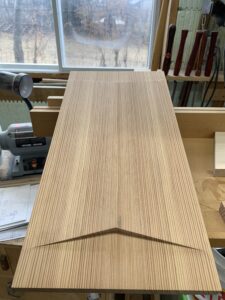
There’s something the eye knows that the mind can’t quite explain. When you look at a hand-carved cabinet front, there’s an immediate sense of depth, warmth, and presence. It’s as if the hand that shaped it is still there, leaving behind an intangible residue of human touch. In contrast, a machine-cut cabinet, though often more precise, feels colder—perfect, but lifeless. Why is that? Why does the mind instinctively sense the hand behind one piece and not the other?
Much of modern design is dictated not by the limitations of the human hand but by the capabilities and constraints of machines. CNC routers and automated tools don’t carve—they execute. They follow predetermined lines, producing flawless repetition without hesitation, second-guessing, or adaptation. The result is often mechanically crisp but devoid of the subtle irregularities that make something feel alive.
Even before the machine touches the material, the design itself is shaped by digital constraints. CAD software forces designers to think in precise geometric terms, limiting organic, evolving forms that might have otherwise emerged from working directly with wood or stone. A digital model doesn’t capture the intuitive decisions a craftsman makes—the slight adjustment of a curve, the deeper gouge of a chisel to correct a natural knot, the spontaneous response to how light plays off a surface. These are elements that no algorithm anticipates because they happen in the moment, through the human relationship between hand, tool, and material.
This isn’t to say machines don’t have their place. Technology has allowed for mass production, efficiency, and accessibility. But it has also flattened our aesthetic expectations. We are so accustomed to the perfection of mechanized production that we sometimes fail to realize what’s missing. The subtle undulations of a hand-planed surface, the irregular shadows cast by a hand-carved detail—these are marks of something deeper than just design. They are signs of human presence, of time spent, of a mind thinking through the hands.
This is why the handcrafted endures. The mind doesn’t just see a cabinet front—it senses the hands that shaped it. It recognizes the imperfection as something familiar, something deeply human. And in a world increasingly shaped by the machine, this sense of authenticity is becoming more rare, and more valuable, than ever.
In this blog, and in the book Elusive Authentic, I will be exploring this phenomenon—the tension between craftsmanship and mechanization, between the enduring value of the hand and the sterile perfection of the machine. As I share case studies, reflections, and examples, I invite you to look closer at the objects around you. Ask yourself: was this made by a hand, or by a machine? And more importantly—can you feel the difference?




0 Comments